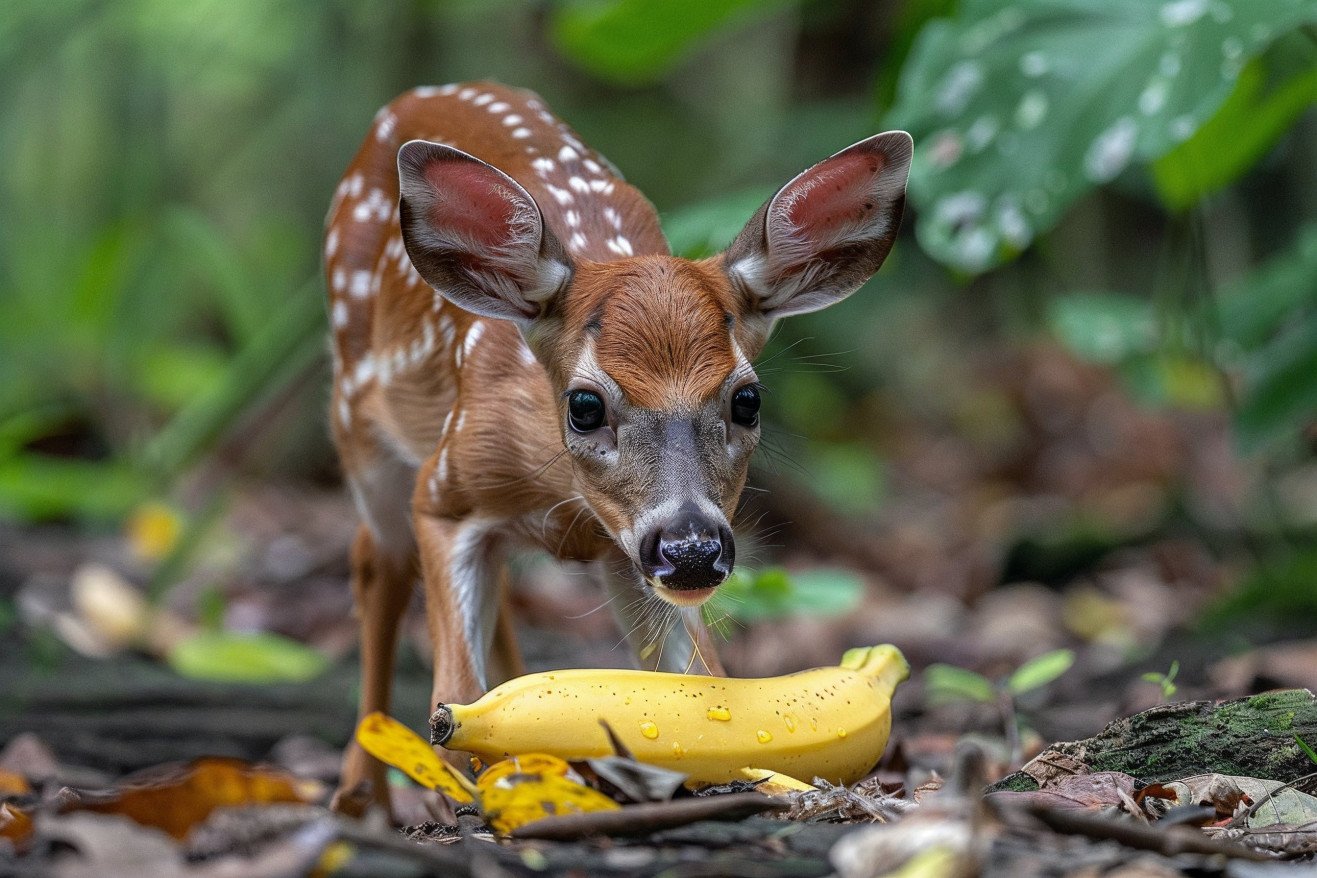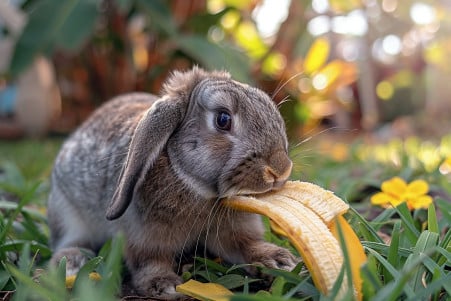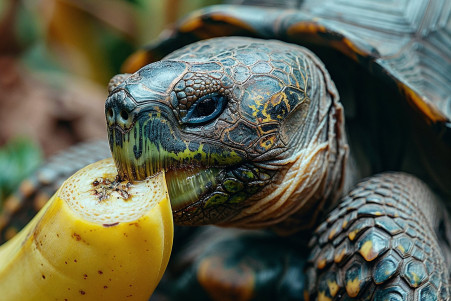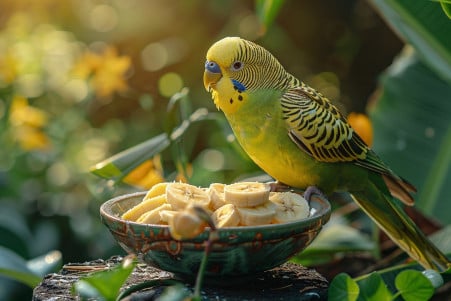Do Deer Eat Bananas? What to Know About Their Digestive System
21 March 2024 • Updated 20 March 2024

Deer are herbivores, but their ability to eat certain fruits, like bananas, is a point of contention in the scientific community. Bananas don’t offer the nutrients deer need and are high in sugar and carbohydrates, which can lead to digestive problems if deer consume them in large amounts. As ruminants that primarily eat grass, deer should stay away from bananas, whether they are offered as treats or are found in the wild.
That said, let’s take a closer look at the research conducted by wildlife biologists and veterinarians on deer’s diets and digestive systems. We’ll explore research on how deer’s digestive systems work to break down different types of food, which will help us understand whether bananas can be part of their diet or should be avoided. This research will help us understand how to care for deer while still respecting their natural diets.
Can deer eat bananas?
What Do Deer Eat in the Wild?
As ruminant mammals, deer are primarily grazers, eating browse, forbs, mast, grasses, and mushrooms. While forbs are their most preferred food source, browse from woody plants is the mainstay because it's available year-round.
Deer are always changing their diet to eat the most nutritious and abundant vegetation at any given time of year. In the spring, this means eating new growth, which is high in protein and other nutrients that deer need, so it's the best time of year for deer to forage. As summer nears, deer start eating browse from woody plants and early fruits like berries. Then in the fall, deer eat carbohydrate-rich mast like acorns and agricultural crops to fatten up for the winter.
This seasonal change in what deer eat helps them get the nutrients they need, including energy, protein, minerals and vitamins that support growth, reproduction and overall health. A diverse, nutritious diet is essential to maintaining healthy deer populations and individual deer health. However, deer's senses and digestive system make them well-suited to finding and eating the most nutritious plants at any given time of year.
Unraveling Deer Diets: Understanding Their Feeding Habits
Even though deer are herbivores, they are not picky eaters. They will consume a wide variety of plant-based foods, including leaves, twigs, and bark. However, there are certain fruits and vegetables that can also be good for deer to eat. Deer Friendly lists several fruits and vegetables that deer like to eat, such as apples, grapes, plums, cherries, pears, carrots, pumpkin, peas, tomatoes, and squash. These foods can give deer extra energy, nutrients, and variety in their diet.
One fruit that can be especially good for deer to eat is the banana. Wondeerful Farm explains that bananas are high in potassium, fiber, and other important nutrients. That said, bananas should not be a staple of a deer's diet because they are high in sugar and carbohydrates, which can cause digestive issues if deer eat too many of them.
The Sweeney Feeders website warns against relying too much on supplemental foods, even healthy ones like fruits and vegetables. While deer may have individual preferences, it's best to plant a variety of fruits and vegetables in their environment to give them the most options.
Risks and Concerns of Supplemental Feeding
While feeding deer may seem like a simple way to help them survive the winter, it can actually be harmful to their health and natural behaviors. The Cummings School of Veterinary Medicine explains that the sudden change in diet that comes with eating rich, unnatural foods can disrupt the microorganisms in the deer's gut. This disruption can cause serious health problems, even if the new food is something as simple as hay.
Supplemental feeding can also increase the risk of disease transmission because it brings deer together in unnaturally high numbers, which makes it easier for diseases like chronic wasting disease to spread. The Extension at the University of New Hampshire explains that these high numbers can also lead to more predators, aggression, and over-browsing that can harm local plants. It can also lead to deer losing their fear of humans and becoming habituated to feed sites, which makes them more likely to be hit by cars.
For these reasons, wildlife experts generally discourage supplemental feeding because it can have many negative effects on deer populations and their natural environments. The Minnesota DNR explains that the best way to support deer is to maintain mature softwood wintering areas, young hardwood stands, and other natural forage sources so that deer can survive without human help. This helps maintain the balance of deer and their ecosystems.
How to Tell If a Deer Is Malnourished or Sick
Malnutrition is a condition resulting from an inadequate intake of energy and nutrients. The Alaska Department of Fish and Game lists the following symptoms of malnutrition: lethargy, a dry and scraggly hair coat, visible bones, lack of body fat, and poor organ condition. These symptoms are the result of the deer's body breaking down its own tissues to provide the energy it needs to survive.
An even bigger concern is Chronic Wasting Disease (CWD), a fatal neurological disease that affects deer, elk, and moose. Symptoms of CWD include severe weight loss, lack of coordination, excessive thirst and urination, and drooping ears. The Michigan Department of Natural Resources also notes that malnutrition can weaken a deer's immune system, making it more susceptible to diseases like CWD.
While the symptoms of malnutrition and CWD can be hard to spot, as Michigan State University explains, ensuring that deer maintain proper nutrition by eating a healthy, well-rounded diet is essential to preventing these diseases and promoting good overall health.
How to Manage Deer Habitats
Habitat management is key to maintaining healthy deer populations and allowing deer to exhibit their natural foraging behaviors. The MU Extension explains that the quantity and quality of forage directly impacts a deer's body size, antler size, reproductive success, and fawn survival. Managing the habitat to ensure a variety of food sources is available will help guarantee that high-quality forages are accessible year-round.
The MU Extension suggests creating a mix of plant successional communities, using even-aged and uneven-aged forest management, conducting timber stand improvement, and creating temporary and permanent forest openings. Prescribed burning can also be used to set back plant succession and stimulate new growth for deer forage, according to Deer Management.
It's important to maintain a balance between woody cover and open areas, and Deer Management recommends that wooded or brushy areas make up 40-60% of a deer's habitat. Proper cattle grazing can also help increase plant diversity and improve the quality of forage plants for deer. Proper deer harvest and population surveys are also important components of habitat management.
By using a combination of these strategies and taking a holistic approach, landowners can ensure that their habitats support healthy deer populations that can exhibit their natural foraging behaviors by feeding on a variety of vegetation.
Conclusion: The Best Way to Support Deer Health
Although deer can eat bananas, they should be a small part of a deer's diet, with the majority of their food coming from natural vegetation. Feeding deer too many bananas or other foods that are outside of their normal diet can lead to digestive problems and malnutrition.
Supplemental feeding of deer is not recommended because it can lead to an increased risk of disease transmission and habitat damage. Instead, proper habitat management and maintaining diverse plant communities are the best ways to support healthy deer populations.
It's important to let deer forage naturally and maintain their natural behaviors to support their overall well-being. By prioritizing the preservation of healthy ecosystems, we can ensure deer have access to the nutritious vegetation they need to thrive.


